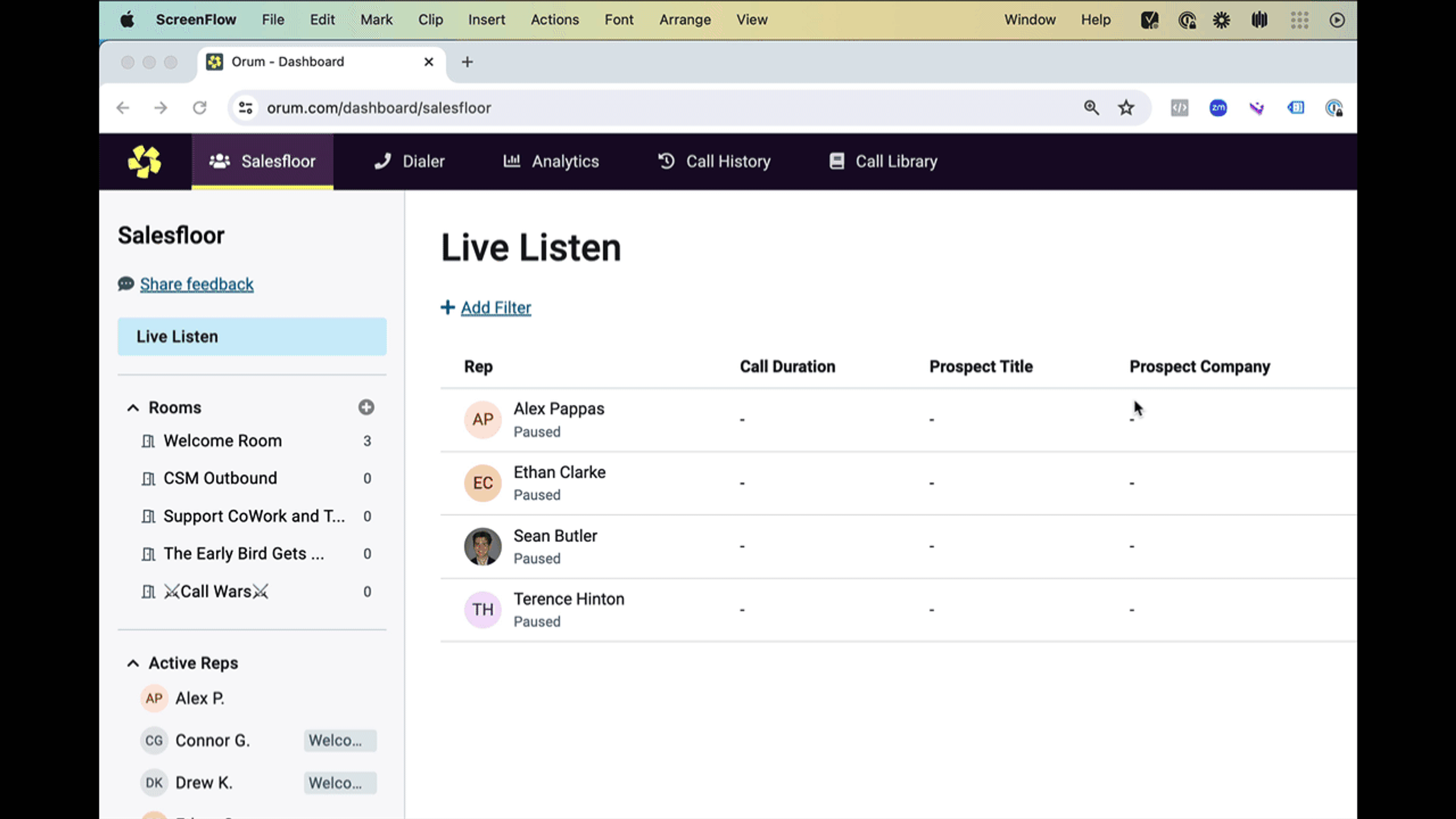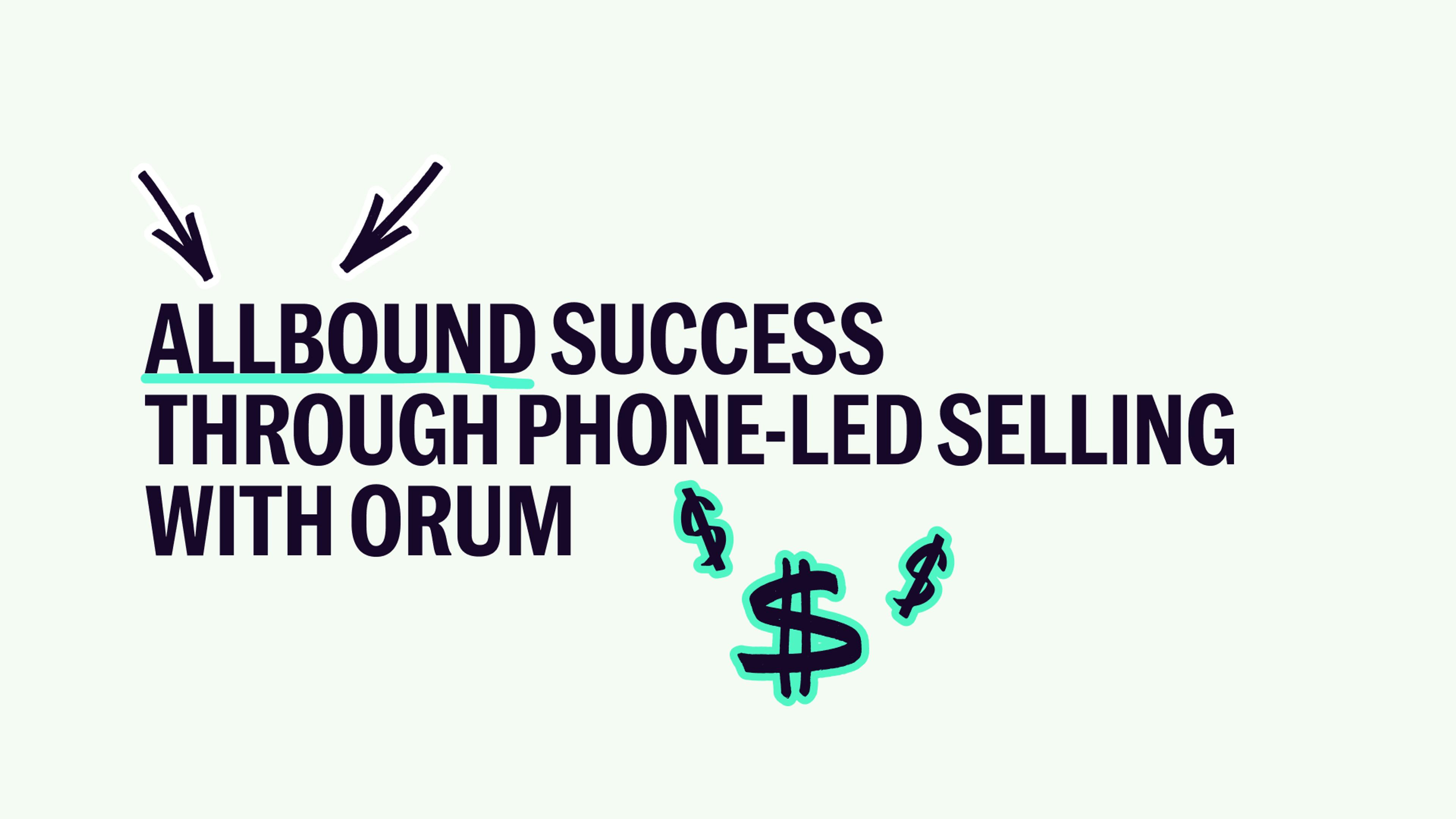How to leave a voicemail prospects actually respond to


Voicemails are a hotly debated topic amongst sales reps. Some love them. Some hate them. Our data shows how impactful voicemails can be and that they greatly improve conversion rates. When SDRs chose to leave a pre-recorded voicemail for the prospect on Orum, there was a 25.8% improvement in the pickup rate for future calls.
When thinking about the process of leaving voicemails, burnout through repetition is a natural concern. The first voicemail a rep leaves might sound amazing, but the 50th will almost assuredly sound like a lifeless robot.
At Orum, we have a voicemail sequencer designed to streamline the process for your reps, eliminating the time wasted through repetitive voicemail drops. An overall benefit to using Orum’s Live Conversation Platform is the time it gives your reps back in the day to sharpen their prospecting skill, and our voicemail tools are no different. However, the time savings mean nothing if you’re leaving garbage messages and/or leaving them at the wrong times.
Like every touchpoint in your sequence, voicemails need to drive value. You need to succinctly provide information and remove the need for them to do the fact-finding. Brevity is important because you want to ensure your voicemails are short enough that smartphones will transcribe the entire voicemail message. This increases the likelihood that a prospect will get the message through the transcription even if they don’t listen to the message.
You want your voicemails to be short, but you also need to be informative. If you only focus on how brief your message is, it can be detrimental to relationship building. While any voicemail you leave can be better than nothing, it’s important to be mindful about providing something valuable.
Examples of bad prospecting voicemails
- Hey, this is [name]. Give me a call back.
- Following up on my email. Give me a call.
- This is [name] from [company name]. Would love to chat.
While quick and easy to execute, these voicemails offer no incentive for the prospect to connect with you. Being mindful of how you leave voicemails doesn’t have to be difficult. It does have to be tactical, however. And it starts with how you create your sequences.
Build out voicemails for specific sequences
As you’ll see in the video above, our Patrick Cairns was mindful of what he said in his voicemails and who they were sent to. He dramatically increased his reply rates by strategically connecting the message to the persona. “When working with voicemails, you want to ensure you have a common denominator amongst everyone receiving the message. When done correctly, you can achieve customization at scale.”
This doesn’t mean customizing a voicemail to every person but rather assuring the voicemails you’re leaving make sense for every CTO or SDR Manager prospect, for example, and setting up sequences for those prospects.
Aaron Milner, another Orum Account Executive, builds out emails for sequences specific to certain industries, personas, product features, competitor analysis, and anything else he knows will be beneficial. “Thanks to the automated sequencing process Orum’s integrations allow for, I can leave a voicemail and send an automated email with follow-up content immediately. These messages are connected to one another and specific to the people I’m reaching out to because I’ve built out specific sequences.”
Below is a real example of a rep achieving incredible open rates by being strategic with Orum’s Voicemail Sequencer. The rep isn’t lifting a finger to leave the voicemail hands-free or send the automated email 5 minutes later but can still tell the prospect the subject of the automated email on the way.

How to personalize your outreach sequences at scale
In Orum’s platform, you can prerecord your voicemails and map them to specific steps in your sequence. The time you save through this process means you can spend more time personalizing other steps in your sequence.
Patrick's first touchpoint is a well-researched email personalized to the prospect and then a LinkedIn connection. Then, when he calls them a day later, he can quickly provide them context for his call. Whether they answer the call or listen to the voicemail he’s previously set up, there is value in the sequence step. The same goes for Aaron's approach to sending the voicemail in tandem with a tied-in email.
The important thing about setting up your voicemails is that they need to be connected to previous outreach efforts. This is what makes Orum’s Voicemail Sequencer so impactful. Taking fifteen minutes to ensure your voicemails are “customized” for each sequence and the steps they occur during not only saves you countless hours of manually leaving those messages but also stacks value and makes you more memorable.
We know that it usually takes seven or more touchpoints to book a meeting, but instead of thinking of those initial attempts as failures, consider them opportunities to build trust in your platform so when you do land a demo, there is firm ground to grow from.
Prospecting is always going to be a numbers game. Things like omnichannel prospecting, leaving voicemails, and providing value with each contact are tools that increase the likelihood of prospects picking being more responsive. Orum’s Live Conversation Platform helps give your reps more time back in their day to take advantage of these tools, thus creating more opportunities. Orum’s voicemail sequencer is just one of the many features available to our users, but when done correctly, it can be dramatically successful.





